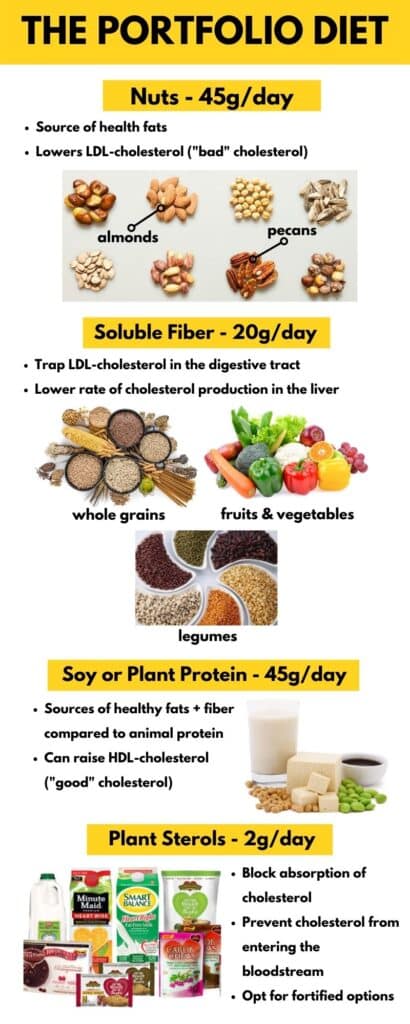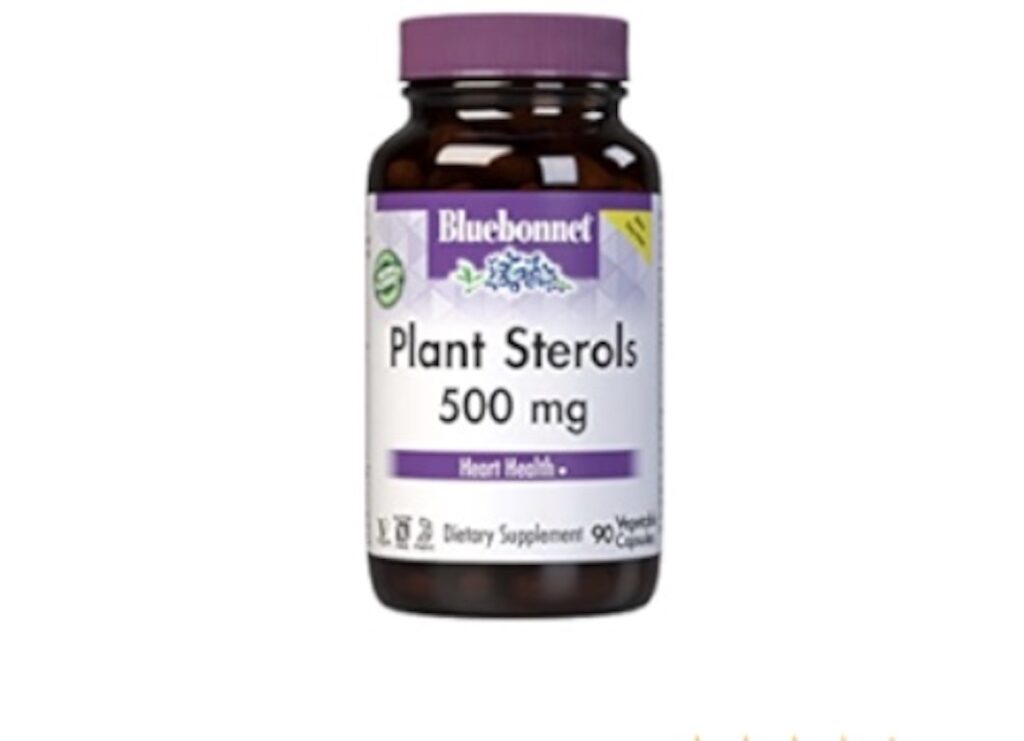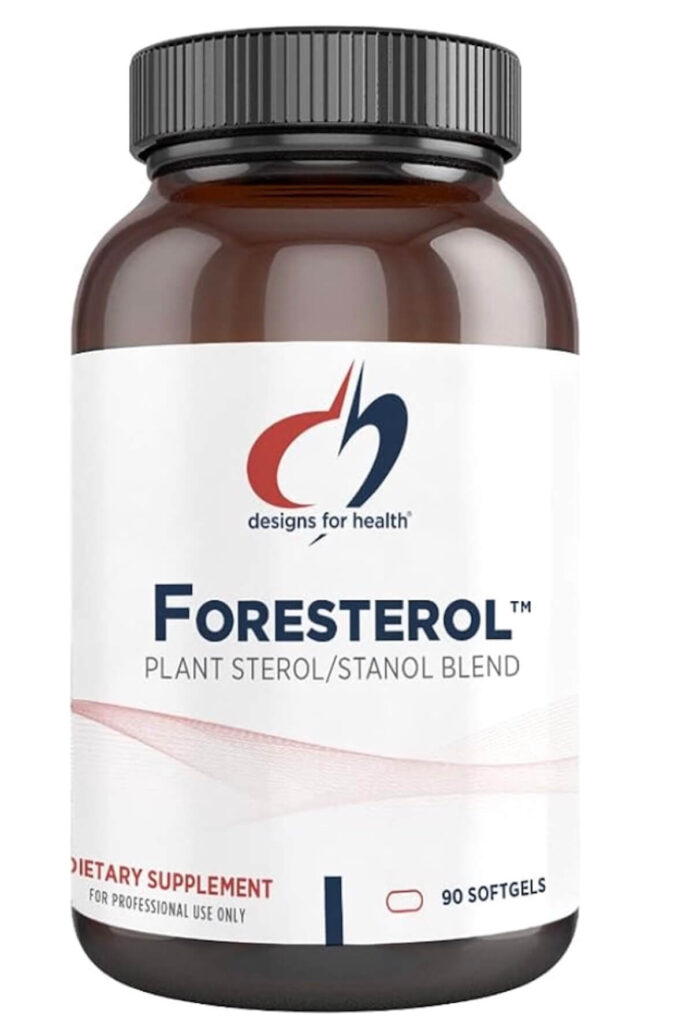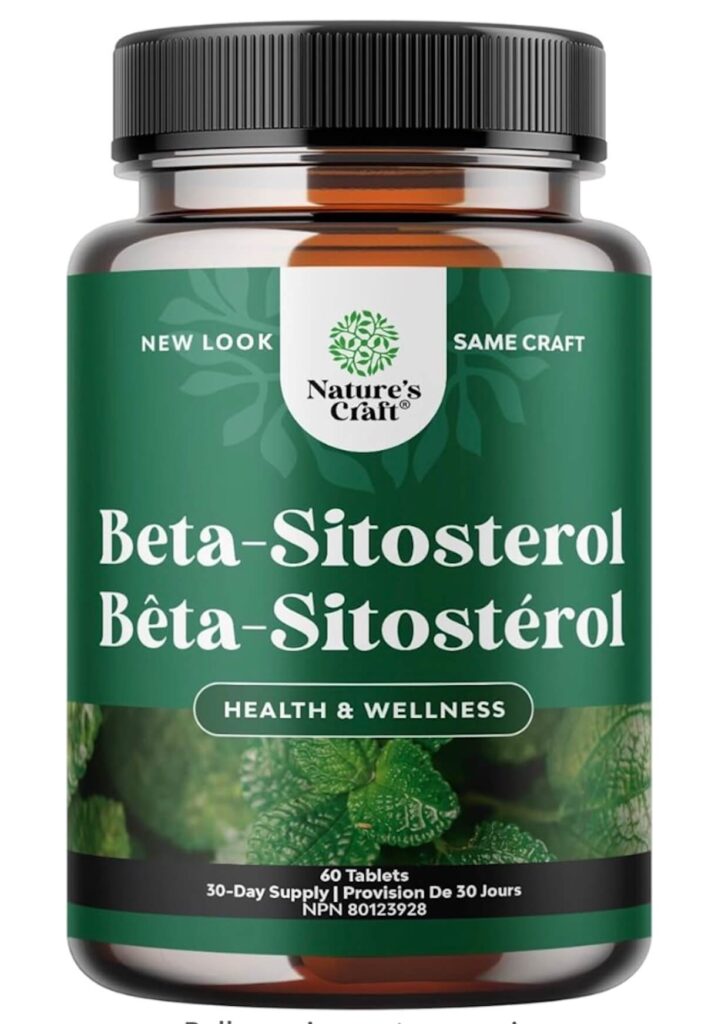Are you looking for a free Portfolio Diet PDF? You can download a free copy through The Canadian Cardiovascular Society.
In this article, we will discuss The Portfolio Diet, what it is and how you can use it to lower your cholesterol. A portfolio diet meal plan will also be provided.
As a bonus, click here to get a FREE Portfolio Diet PDF Checklist delivered to your inbox to keep you on track to lower your cholesterol for good.
*Please note that this post contains clearly identified affiliate links. If you click on these links and choose to make a purchase, I may receive a commission (at no cost to you). As an Amazon Associate, I earn from qualifying purchases.
Top Takeaways
- The Portfolio Diet is a heart-healthy eating approach developed by Dr. David Jenkins, emphasizing the inclusion of specific food groups like nuts, soluble fiber, soy or plant protein, and plant sterols in your daily meals.
- It is designed to lower LDL (“bad”) cholesterol levels and reduce the risk of coronary heart disease by promoting the consumption of these heart-protective foods.
- Research has shown that following the Portfolio Diet can lead to significant reductions in LDL cholesterol, lower total cholesterol, decreased blood pressure, and improved overall cardiovascular health.
- The diet provides flexibility for customization, offers substitutions to accommodate dietary preferences, and should be complemented with a healthy lifestyle that includes physical activity, stress management, sleep, and any necessary medications for optimal cholesterol management.
Pin It For Later!
The Portfolio Diet – A Positive Message
Heart-healthy diets are on the rise with an increasing focus on diets such as the Mediterranean diet, the DASH diet, and the vegetarian diet. However, not enough people have heard of the portfolio diet.
Dr. David Jenkins, a professor in the Departments of Medicine and Nutritional Sciences of the University of Toronto developed the portfolio diet with the aim of lowering one’s cholesterol level and reducing the risk of coronary heart disease (1).
Focusing on including more heart-protective foods in one’s diet can help strengthen our heart. In the past, the focus was on what foods to limit or avoid to protect our heart. Newer research (like the portfolio diet) approaches healthy eating by asking what foods should we eat every day to reduce heart disease risk.
So instead of focusing on foods to “avoid”, we want to change the message to what foods can I “add” or “include.” This is a more positive way of looking at health and an easier way to change eating patterns for the better.
This article will explore the mechanism of the portfolio diet and how you can easily incorporate it into your eating habits.
What Is The Portfolio Eating Pattern?
As the name suggests, the diet includes a dietary portfolio of plant-based foods: nuts, soluble fiber, soy or plant protein, and plant sterols. The combination of eating these food groups every day maximizes the cholesterol-lowering benefits.
What Are the Benefits?
I’m sure you are wondering how much cholesterol-lowering does the portfolio diet actually offer?
The diet specifically lowers low-density lipoprotein (LDL) cholesterol which is often referred to as the “bad” cholesterol. LDL-cholesterol can build up in your arteries. If the build-up of cholesterol is in arteries carrying blood to and from the heart, the risk of a heart attack increases.
A one-year study by Dr. Jenkins monitored participants who followed the portfolio eating pattern under real-world conditions. Over 30% of participants who stuck to the diet saw over 20% decrease in LDL-cholesterol concentrations (2).
The diet has also been proven to lower other markers of cardiovascular disease risk, such as total cholesterol, blood pressure, triglycerides, and C-reactive protein (3).
Dr. Jenkins also conducted a study that directly compared the efficacy of the portfolio diet to a statin, a medication that lowers LDL cholesterol. Both significantly lower LDL-cholesterol levels as the statin medication decreased the LDL-cholesterol concentration by around 33% and the diet decreased LDL-cholesterol concentrations by around 30% after 4 weeks (4).
Thus, nutritional changes are considered a valuable form of cholesterol management.

Four Food Groupings
Let’s explore the benefits of each food component of the portfolio diet. The following recommended daily intakes are based on a standard 2,000-calorie diet.
1. Nuts
Nuts are a good source of fats, particularly healthy fats such as unsaturated and polyunsaturated fatty acids. Most people tend to shy away from fats because of common misconceptions about the health benefits and their high calories.
However, not only do the calories in nuts keep you full longer, but they may benefit your weight too. A review study found that eating more nuts is connected with decreases in both weight and waist circumference. The research included a large assortment of nuts—including cashews, pistachios, almonds, walnuts, and peanuts (5).
Additionally, a daily intake of a handful or approximately 45g of nuts can lower LDL-cholesterol levels (1). You should incorporate a wide variety of nuts and seeds such as peanuts, pistachios, walnuts, hazelnuts, pecans, cashews, etc. for a more diverse nutrient profile.
If whole nuts are not your thing, try nut butter instead. Two tablespoons of nut butter is a serving. Remember to choose unsalted nuts and no salt-added nut butter to manage your daily sodium intake.
2. Soluble Fiber
Soluble, or viscous, fiber thickens in the presence of water within our intestine which prevents cholesterol from entering the bloodstream. The gut bacteria also feed on the fiber to produce short-chain fatty acids that can lower the rate of cholesterol production in the liver (6).
Soluble fiber can be found in fruits, vegetables, legumes, and whole grains like oat bran. Consuming these foods should ensure the recommended intake of 20g of viscous fiber (7).
Unfortunately, most people do not eat enough of those foods. However, there are simple solutions to increase your soluble fiber intakes such as adding more vegetables to your meals, snacking on fruits and vegetables, and opting for whole-grain cereals and baked goods.
When increasing your fiber intake, please make sure you are also drinking enough water to prevent any digestive discomfort.
3. Soy Or Plant Protein
Compared to animal-based protein, plant-based protein can provide more fiber which we have discussed as its benefits above, and contain more healthy fats that regulate cholesterol levels (8).
To consume the recommended daily intake of 45g of plant protein, you should explore various options including legumes, pulses, nuts, seeds, and whole grains (7). Minimally processed soy protein includes soybean, tofu, tempeh, natto, and miso which have been a component of Japanese cuisine.
To ensure adequate intake of this food group, for every animal-based protein, try to replace it with a plant-based alternative.
4. Plant Sterols
Plant sterols, or phytosterols, have similar chemical structures compared to cholesterol. They can block the absorption of cholesterol, preventing it from entering the bloodstream and remaining in our digestive system, to be removed as waste (8).
Phytosterols occur naturally in some fruits and vegetables but to reach the daily recommended intake of 2g, explore fortified options such as spreads, yogurt, and cereals (7). Some may opt for dietary supplements.
Thus, to increase your intake of plant sterols, look for fortified options instead of non-fortified options. Checking the food labels and ingredient lists will help you know which food contains added plant sterols.
If you are interested in purchasing a supplement, here are some examples you can purchase.
Video Tutorial
Other Considerations
Eating Out
Eating out can definitely be a challenge when you are trying to be conscious of your diet. However, that does not mean you cant enjoy a night out on the town.
When you are eating out try to look for dishes that contain loads of vegetables and plant-based proteins such as tofu, chickpea, and lentils. Be sure to avoid options that are high in saturated and trans fat such as deep-fried foods.
Do not hesitate to talk to the staff about the ingredients of a dish so you can make an informed decision and avoid any allergies.
Easy Swaps/ Substitutions
The following are suggestions for substitutions that you can make if you’re interested in switching to the portfolio eating pattern.
- Butter – Fortified plant sterol margarine or nut butter like natural unsalted almond butter
- Cow milk – unsweetened soy milk
- Burger beef patty – Veggie or soy patty
- Ground meat – Tofu or tempeh
- Eggs – Tofu scramble
- Animal-based cheese – Nutritional yeast or nut-based cheese
The Portfolio Diet Meal Plan
This is a sample portfolio diet meal plan that you can either follow or customize based on your personal preference!
Day One
- Breakfast: overnight oat bran with blueberries (contains soluble fiber, plant protein, nuts, plant sterols)
- Lunch: silken tofu scramble with your vegetable of choice on toasts (contains soluble fiber, plant protein, nuts, plant sterols)
- Dinner: lentil burrito (contains soluble fiber, plant protein, nuts, plant sterols)
- Snacks: banana bread flaxseed pudding (contains soluble fiber, plant protein, nuts, plant sterols)
Day Two
- Breakfast: peanut butter avocado toast with a cup of soy milk (contains soluble fiber, plant protein, nuts, plant sterols)
- Lunch: Salad with spinach, cucumber, tomato, chickpea and cherry vinaigrette (contains soluble fiber, plant protein, nuts, plant sterols)
- Dinner: tempeh lettuce wrap (contains soluble fiber, plant protein, plant sterols)
- Snacks: a lentil muffin (contains soluble fiber, plant protein, nuts, plant sterols)
Day Three
- Breakfast: tofu toast and a cup of fortified plant sterol yogurt (contains soluble fiber, plant protein, nuts, plant sterols)
- Lunch: tomato oatmeal soup (contains soluble fiber, plant sterols, nuts)
- Dinner: roasted tempeh, bell peppers, broccoli, zucchini with brown rice (contains soluble fiber, plant protein, plant sterols)
- Snacks: black bean smoothie (contains soluble fiber, plant protein, nuts, plant sterols)
The Portfolio Diet PDF Checklist
Click here to get this FREE Portfolio Diet PDF Checklist delivered to your inbox to keep you on track to lower your cholesterol for good.

Other Things To Consider
If you are allergic to soy, try other plant-based protein options like beans and legumes.
If you are allergic to nuts, try seeds such as sesame seeds, chia seeds, hemp seeds, sunflower seeds, and pumpkin seeds.
It is important to note that other aspects besides your diet can influence your cholesterol level, including physical activity level, stress, sleep, and medication. To maximize the cholesterol-lowering effect, try your best to maintain a healthy lifestyle.
Check out these other posts that discuss how long it takes to lower cholesterol with diet, low cholesterol dessert recipes, coffee creamers for low cholesterol, natural drinks to lower cholesterol and low cholesterol food list.

Final Thoughts
The portfolio diet focuses on the four food groups of nuts, plant protein, soluble fiber, and plant sterols with the aim of naturally lowering your cholesterol level. The rise of research surrounding the cholesterol-lowering effect of this diet has confirmed its strength.
Food research and technology have also made it easy to find plant-based alternatives and fortified options for those looking to implement this diet into their everyday life. You can adjust the diet based on your dietary needs and personal preference easily without restricting any food group.
Hopefully, this has been helpful in understanding how you can use the portfolio diet. Best of luck and don’t forget to snag a copy of the Portfolio Diet PDF here.
Happy eating!
This article was written by Shirley Le, Nutrition Student, and Veronica Rouse, MAN, RD, CDE.





Thank you for a great article. I am following the portfolio diet since about a year and have had good results according to my blood work and I am feeling good. The journey did come with a steep learning curve, and your article would have been incredibly helpful to have at the beginning.
The biggest challenges for me was to include enough fibre and enough plant protein. I found that even when I was trying really hard and ate big portions I came up short according to the diet. I got some phsyllium husk powder to top up the fibre and compromised with the plant protein that it was ok as long as I had plant protein as my main protein in two of my daily meals, which gets me at least 2/3 of the way.
Top tips to anybody starting out is to introduce fibre slowly over a couple of weeks and to be ok with not getting it perfect from the get-go. It is ok to introduce some positive changes later on too!
Thanks for sharing your wonderful story Mia. Keep up the great work! Cheers, Veronica
good
Ran across a mention elsewhere of the Portfolio Diet, found this page with a google search and, wow, what GREAT info!! And even links to appropriate recipes. New fan of your site, and very thankful to find it!
Awe what kind words 🙂 Thanks Marijka!